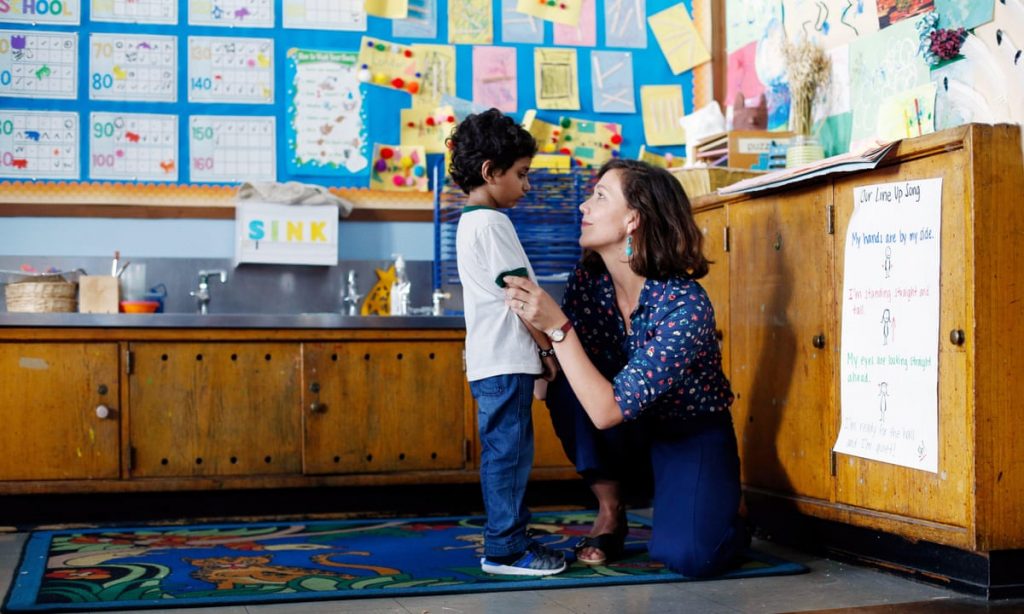What Is Teacher Looping In Education?
Teacher looping in education is a popular method to help students thrive from year to year, but how exactly does it work?

Educational opportunities are important for driving student success. While various teaching tools have proven to aid the learning process, one strategy has also been known to improve test scores and reduce student anxiety. Teacher looping in education is a tactic that allows students to stay with the same teacher for multiple years.
Why is looping important in education?
Teacher looping allows K-12 students to pass into higher grades without switching teachers. Sometimes this simply means that a teacher has one group of students to impart lessons onto, and sometimes it entails that a teacher instructs multiple class blocks of various ages that remain in that educator’s care for multiple years.
Instead of switching out teachers each year and forcing students to have to get a new educator with new teaching styles, teacher looping skips the introduction period. Student comfort levels are higher and they are able to learn easier through the following years. This model offers a more realistic experience similar to what adults experience in their community and careers.
Although it has been suggested that learning from different teachers is good for children, most adults do not have new neighbors every fall, new religious leaders do not take over every year, and supervisors in professional careers often hold their positions for more than just a year. In order to prepare children for the future, they need to be able to work with authority figures and individuals for long periods of time and get to know them throughout their journey.
What are the advantages of teacher looping?
The advantages of teacher looping are many. Students build stronger relationships within the classroom and thus are able to enjoy a more solidified classroom culture. Teachers are better able to understand students’ individual needs and give children the environment that best suits them.
It is easier for students to respect a teacher they work with for longer periods. This can aid the teacher in providing children with summer projects to keep them engaged in learning even when class is let out for a long break. This way learning loss is lessened and parents can also witness the power of teacher looping and better support their children and those educating them.

Best of all, students involved in teacher looping programs have displayed higher test scores than students who traditionally switched teachers each year. Dating back as far as 1997, at Cleveland State University and East Cleveland Schools, students who remained with the same teacher displayed significant increases in math and reading abilities compared to those who did not. This was again proven by a 2004 Florida Institute Study, which also found that teacher looping also improved attendance and benefited minorities living in urban areas.
What are the disadvantages of teacher looping?
Unfortunately, in some cases, teacher looping leads to serious disadvantages. Not all teaching methods work on all students, and some children and/or their families will not agree with their teachers. Whereas educators often have their own set of core values, so do families, and if those clash, students are more likely to experience conflict with their teacher. Remaining under one instructor’s care for multiple years, in these instances, is detrimental to student success.
In addition, integrating new students is more challenging when teacher looping is in effect. Children and teachers who build strong relationships and support a homogenized classroom culture are not as welcoming for students who have changed school districts or are placed into the group after the introductory phase. They are more likely to feel like an outsider and experience longer acquaintance periods, which may be distracting and disruptive to their ability to learn and grow with the class.
The last, and most concerning issue that is spawned from teacher looping in education relates to a lack of variety, which leads to over-attachment to teachers. It is well-known that students look up to those who help them learn and grow. This is, of course, healthy and normal, but without a variety of instruction, some students may become too attached to the point that when it is time to move on they suffer, and so their performance suffers as well.
There are valid pros and cons to teacher looping. Although it has been known to improve test scores, reduce student anxiety, and create stronger class groups, it can lead to heightened conflict between students who do not get along with their teacher, make it difficult for new students to integrate, and even foster over-attachment. Schools considering this method will find it beneficial to reach out to the community and make their decision regarding this alternative teaching method based on what is best for the local population.
Article continues below headlines

The Best Type Of Butter Dish For Your Home Kitchen
The history of the butter dish is intertwined with the history of butter itself and the evolution of dining etiquette. …
Continue reading "The Best Type Of Butter Dish For Your Home Kitchen"
The post The Best Type Of Butter Dish For Your Home Kitchen appeared first on Tell Me Best.
Continue
NASA Dragonfly Mission Sends Drone Far Into Solar System For Incredible Mission | GIANT FREAKIN ROBOT
NASA is sending a drone-like craft to explore Saturn’s largest Moon as part of its Dragonfly mission. Known as Titan, …Continue reading "NASA Dragonfly Mission Sends Drone Far Into Solar System For Incredible Mission"
Continue






